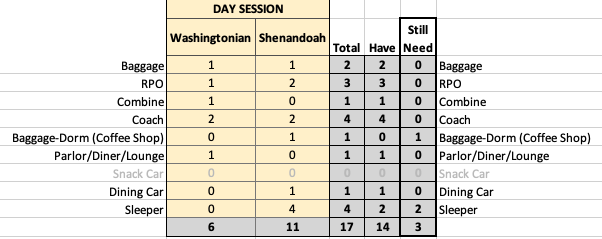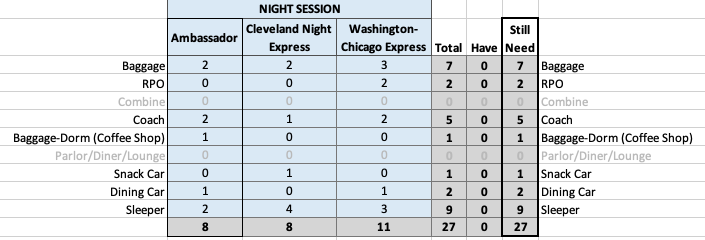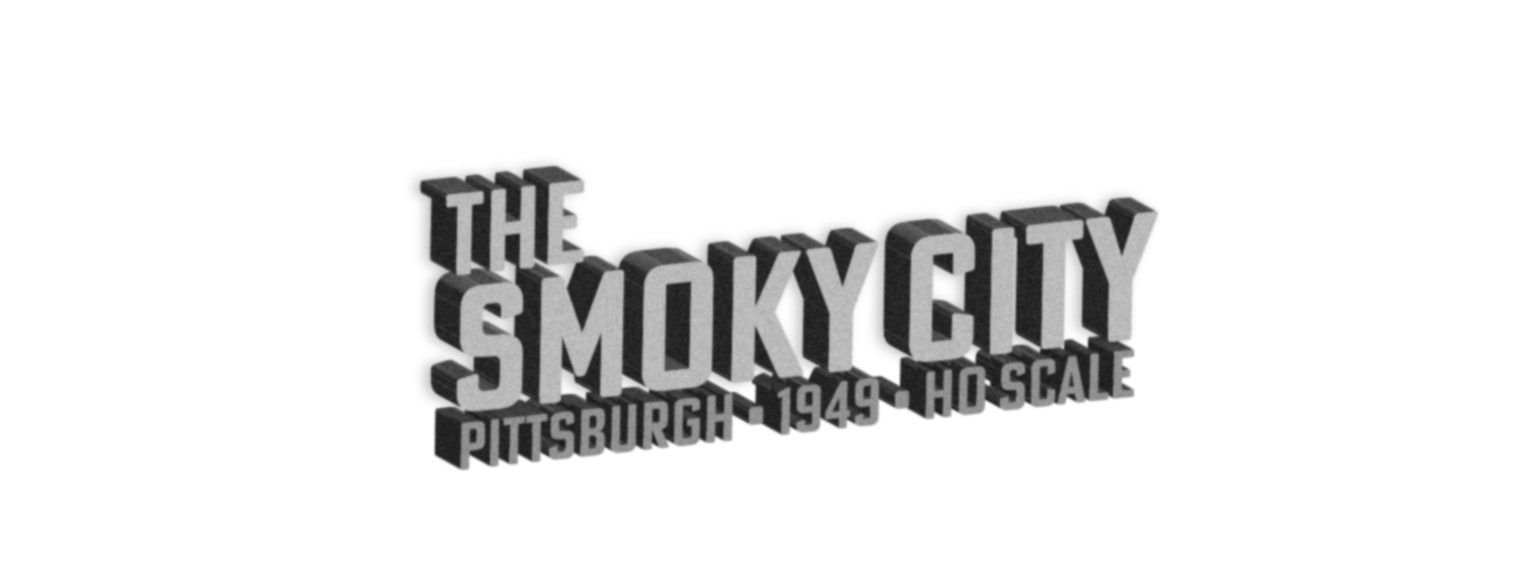In the year or more that I’ve been planning for a roster, using the B&O’s October 1949 consist book as a guide, my intention has been to use old Athearn cars for the heavyweights (spruced up with paint, new wheels, interior detail and lighting), and more modern models for the streamlined lightweight cars, which are only needed for two of the seven B&O trains through Pittsburgh. However, I’m now thinking I’ll use the Athearn cars only for the two B&O trains in the daytime operating session (and probably the P&LE/NYC commuter trains), and will go with modern models for all five of the night session trains, both lightweight and heavyweight.
The Shortness is Only Acceptable in Isolation
The shift in thought came when I purchased two modern models of heavyweight combines to use with the Athearn heavyweights, since Athearn didn’t make coach/baggage combines. The fact that the Athearn models are about an inch too short becomes very apparent next the the modern cars, which are the correct 72 scale feet long. My reason for wanting to use Athearn heavyweights in the first place was so that I could incorporate the seven that my dad built from kits in the 70s. With the detail work I’ve been doing on those cars and on additional copies I’ve purchased, I think they look good enough to use, but not when mixed with modern models of the correct length.
18% Overweight
Besides being a bit short, once the interior details from Palace Car Company are added to the Athearn heavyweights, they’re an ounce over the NMRA recommended weight of 5.88 oz. I suppose this could be remedied by using a different floor/weight than the 2.4-oz one they provide, but I don’t want to re-do the few cars I’ve already detailed.
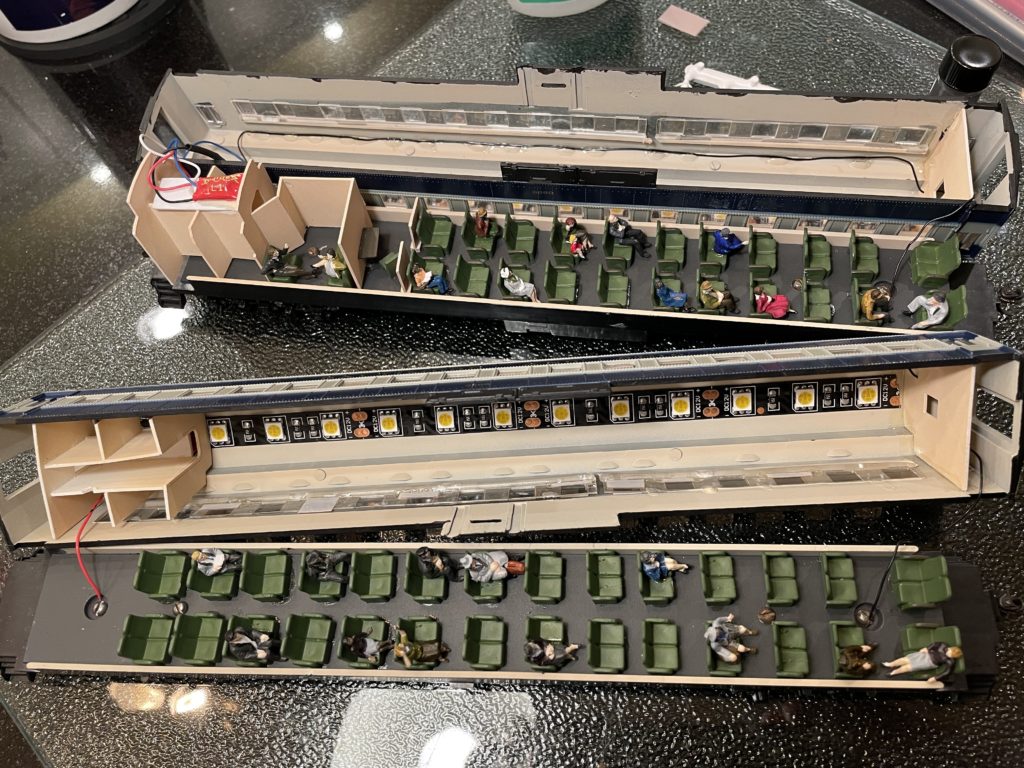
My Pickups are a Drag
The homemade phosphor bronze power pickups on the new metal wheelsets seem to be creating excessive drag on the axles. I can work on that to reduce drag, but as of now, the weight and drag issues make even a 5-car train a bit too much for my weakest B&O Pacific to pull on flat track without slipping around 22″ radius curves.
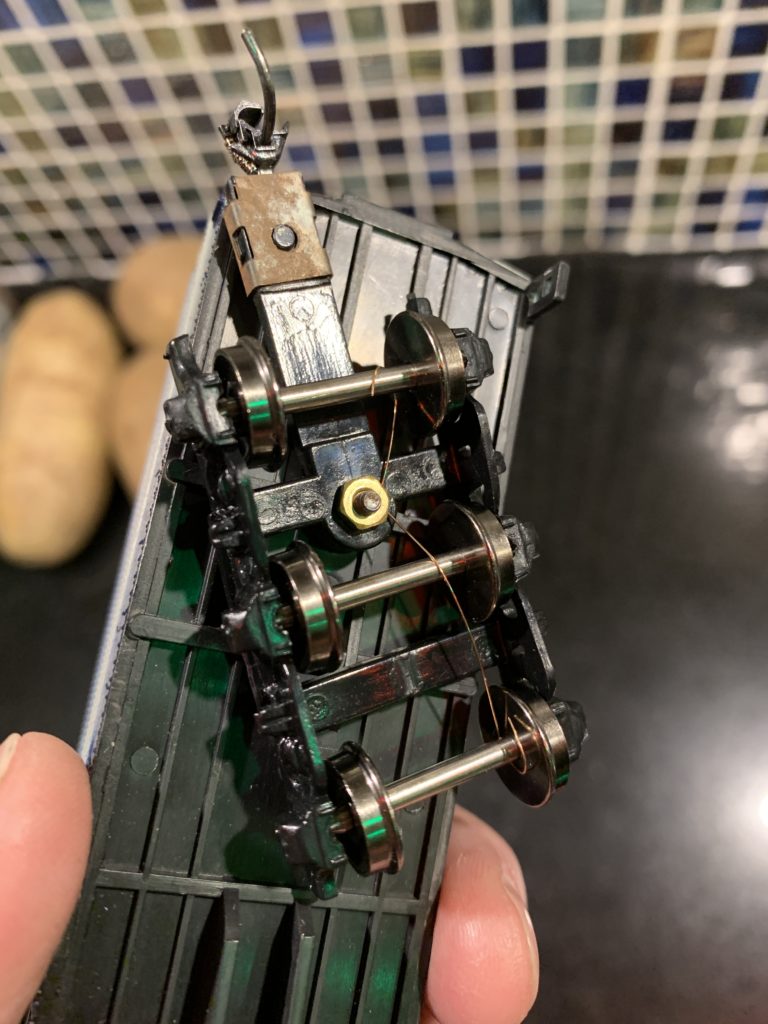
A Good Place to Stop
I now have a total of 14 Athearn heavyweight cars, at various stages of the detailing/upgrade process. My chart of cars needed and cars obtained shows that those 14 are nearly sufficient for building the two day session trains, the Washingtonian and the Shenandoah, with no excess cars. Only two more sleepers and a baggage-dorm car are still needed. It feels fortunate that I came to this realization about mixing short Athearn cars with cars of prototypical length before procuring additional cars.
